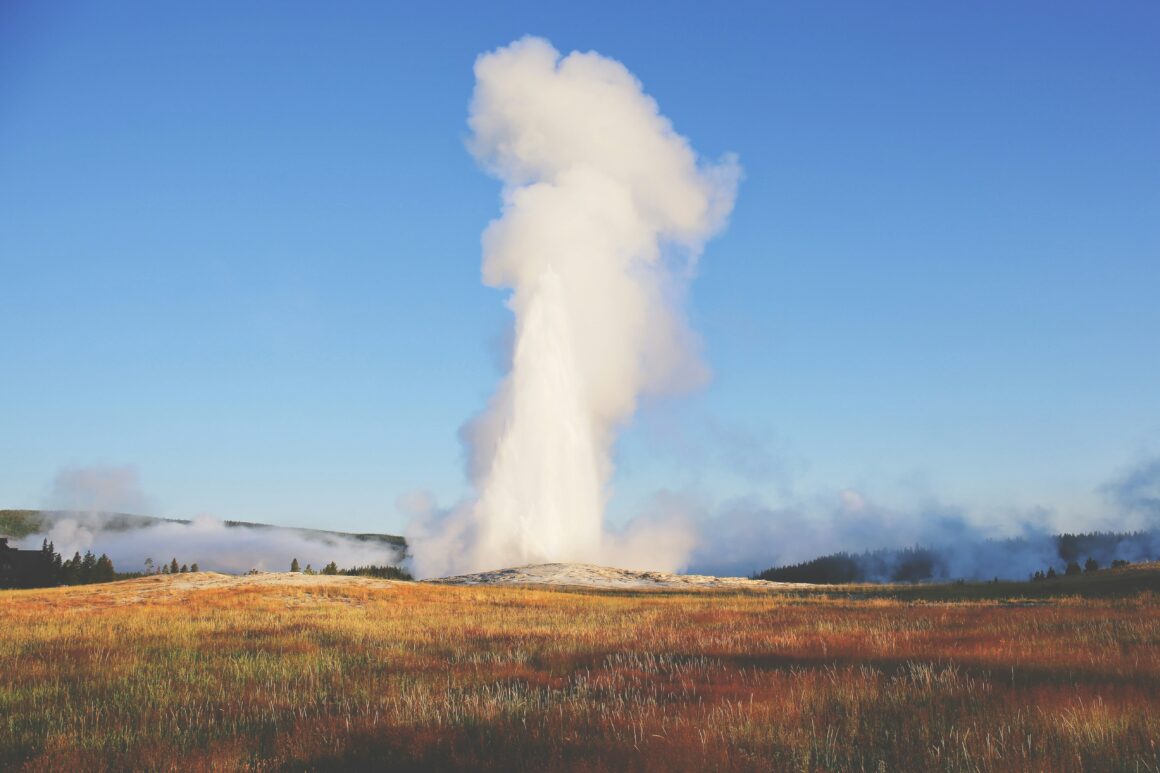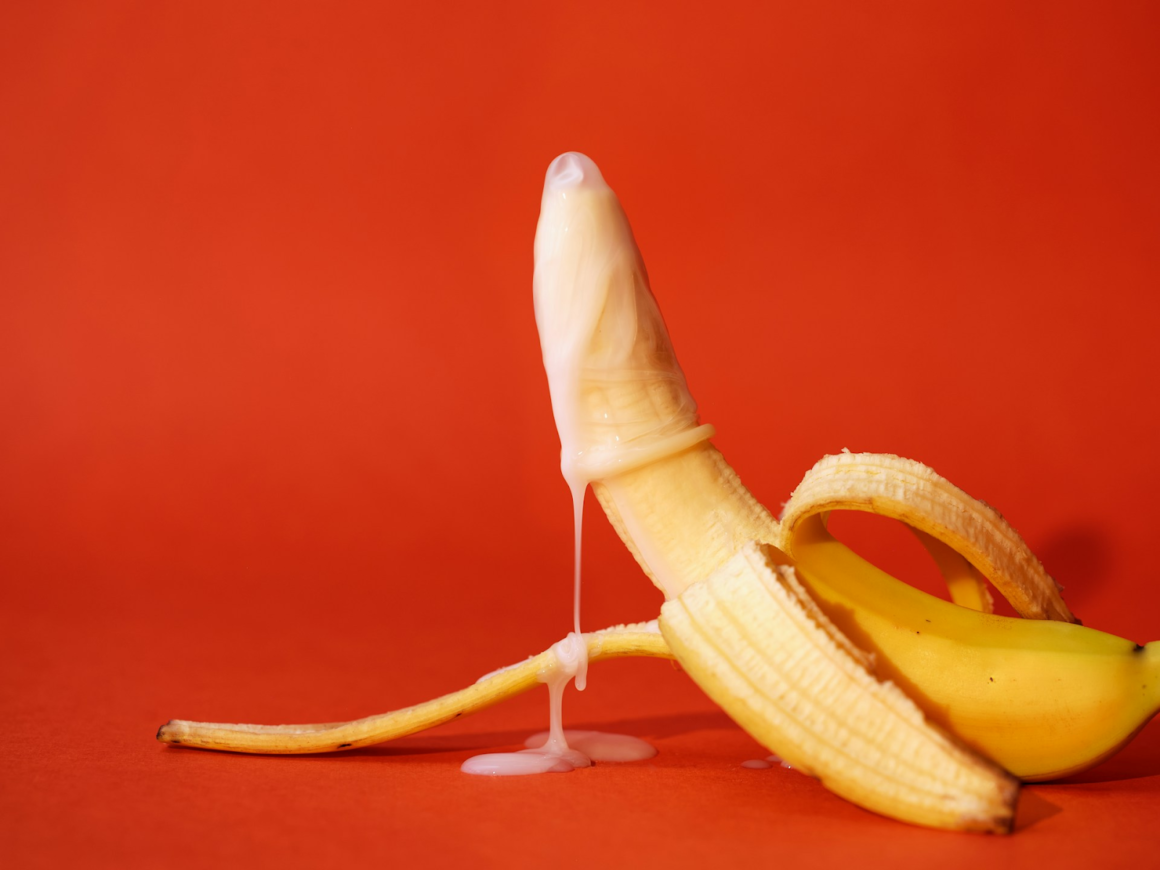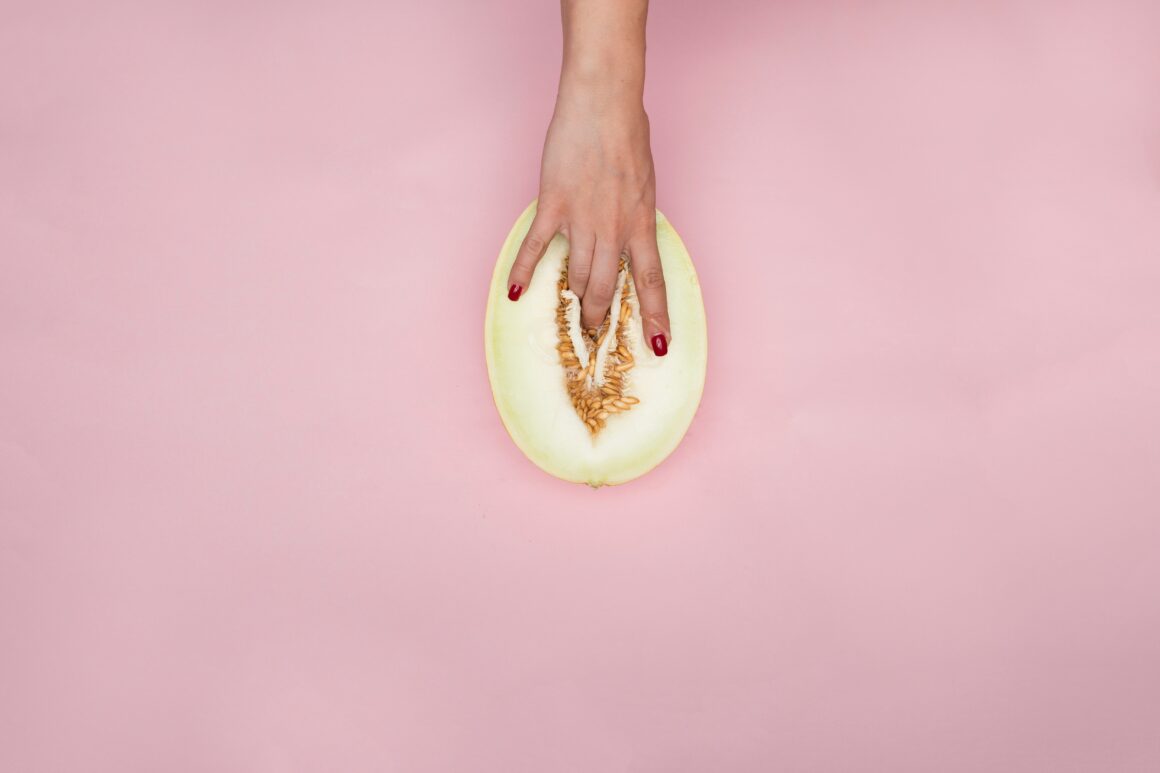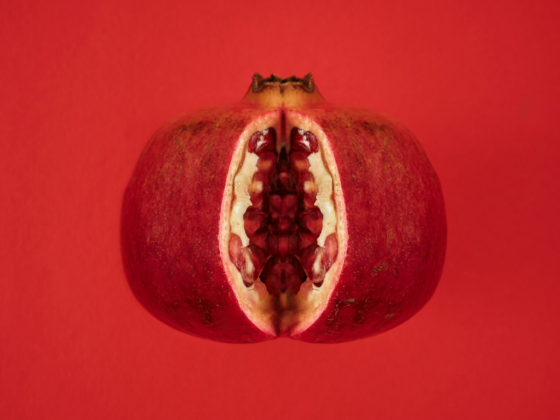Last Updated on 31st March 2025 by Charlie Walsh

Cum and squirting.
Perhaps not a topic you thought you’d be reading about today, but one that can improve our sex lives, expectations, and understanding drastically once you’ve taken the time to understand them both. And, of course, there’s some clear confusion between the two.
With so much misinformation out there, and it’s high time we set the record straight.
After all, when your girl says “she’s gonna cum”, it’s never really the same as when you say it, so what gives? And I mean, think about it. If we don’t even know what’s going on with our bodies, how can we expect to have great sex and intimacy with our partners? It’s like trying to play a game without knowing the rules.
So, we’re gonna break it down and separate the facts from the myths. No more awkward confusion or misunderstandings. By the end of this article, you’ll have a solid grasp on what cum and squirting really are and why knowing the difference matters.
But this isn’t just about getting the biology right. It’s about opening up a more honest, informed conversation around sex. When we understand our bodies better, we can communicate our needs and desires more clearly.
And that, my friend, is the key to mind-blowing penetrative sex and deeper intimacy.
So, let’s do this. We’re gonna explore the ins and outs (pun intended) of cum and squirting and come out the other side as more enlightened, empowered sexual beings. You ready, bro? Let’s go!
What is Male Ejaculation?

Let’s start with the boys and what precisely male ejaculate is.
As you probably know, it’s when semen (that milky, sticky fluid) gets launched out of the penis during an orgasm at speeds of up to 28mph. It’s like nature’s way of saying, “Let’s make a baby!” But let’s be real; it’s not just about making babies. Ejaculating feels pretty damn good too.
- It’s Not Just for Fun: Sure, ejaculation is a big part of sexual pleasure, but it also serves a biological purpose. It’s how the male body delivers sperm (the little swimmers that carry genetic material) into the female reproductive system for potential baby-making.
- The Brain-Penis Connection: The whole process starts with a mix of physical stimulation and mental arousal. Your brain and your junk are in constant communication, sending signals back and forth until you reach the point of no return.
So, what makes it all happen?
Well, it’s like a carefully choreographed dance of hormones, reflexes, and muscle contractions.
- The Build-Up: As you get more and more aroused, nerve signals from your brain and genital area start gearing up for the big finale. It’s like your body says, “Get ready; we’re about to launch!”
- The Main Event: When you reach the peak of sexual arousal, your seminal vesicles, male prostate, and penis muscles all contract in a perfectly timed sequence, propelling semen out of the penis. It’s like a sexual symphony of bodily functions.
What’s in the Stuff?
Now, let’s talk about semen itself. It’s not just a bunch of sperm swimming around in there. I mean, it is, but it’s actually a complex mixture designed to keep those little guys alive and kicking.
- The Ingredients: Semen contains sperm (duh), but it also has fluids from the seminal vesicles, prostate, and bulbourethral glands. These fluids are packed with nutrients, enzymes, and other substances that help the sperm survive and thrive on their journey.
- The Delivery System: Think of semen as the sperm’s personal Uber. It provides transportation and a cozy environment for the sperm to travel through the female reproductive tract, increasing the chances of successful fertilization.
Sperm vs. Semen: Know the Difference
A lot of people use “sperm” and “semen” interchangeably, but they’re actually two different things.
- Sperm: These are the individual reproductive cells, the microscopic tadpole-looking dudes on a mission to fertilize an egg.
- Semen: This is the fluid that carries the sperm. It’s like the river that the sperm swim through to reach their destination.
So there you have it. Male ejaculation is a fascinating blend of biology, pleasure, and purpose. By understanding what’s really going on down there, you can appreciate the complexity of your own body and maybe even impress your partner with your newfound knowledge.
Just remember, with great power (and information) comes great responsibility. Use it wisely!
The Lowdown on Female Ejaculation (Squirting)

So, female ejaculate, what are we dealing with here?
In simple terms, squirting, also called female ejaculation, is the expulsion of fluid from the urethra (the tube that carries urine) during sexual arousal or the female orgasm. So yeah, if you’re thinking that squirt is just pee, you’re right… kinda.
Squirt itself is not the same as vaginal lubrication, which is a clear, slippery fluid produced by glands inside the vagina. Squirting fluid is usually more watery and can be released in varying amounts, from a few drops to a larger gush.
What’s in female ejaculate?
Research suggests that squirting fluid is primarily composed of both urine mixed with small amounts of other substances, including prostate-specific antigen (PSA), which is usually associated with male reproductive fluids.
This might seem surprising, but it turns out that people with female anatomy also have female prostate glands, although they’re much smaller than those in males.
Is squirting the same as female ejaculation?
This is where the debate comes in.
Some researchers believe that squirting is a distinct phenomenon from female ejaculation, which they define as the release of a milky fluid from the Skene’s glands (located near the G-spot, the kind of female prostate, so to speak).
Others argue that both fluids can be considered forms of female ejaculation, as they’re both released during sexual activity and contain similar components.
I’m not advocating for porn, but if you’ve watched it or seen this in your own sexual experiences, you’ll have seen milky white liquid kind of trickle out (female ejaculate) or actual burst of clear fluid, which most define as squirting.
That’s the difference between the two.
Why do some people squirt and others don’t?
Like many aspects of human sexuality, the ability to squirt seems to vary from person to person. Some individuals may be more predisposed to it due to anatomical factors, while others may need to learn specific techniques or explore different types of stimulation.
It’s important to remember that there’s no right or wrong way to experience pleasure, and squirting is just one of many possible expressions of sexual response.
Tackling the Myths of Female Ejaculate

Obviously there’s a lot of crazy information, gossip, and sexual rumours out there, so let’s get into some straight facts to get on the same page.
- Myth #1: Every woman can and should squirt. Wrong. Just like with any aspect of sexuality, every woman’s body is different. Some may experience squirting, while others don’t, and that’s totally normal. Just like some guys and girls will like or dislike squirting. Being able to or not being able to squirt is not a problem.
- Myth #2: Squirting is just peeing. Not quite. While the fluid released during squirting does come out of the urethra (the same hole you pee from), it’s not just urine. Studies have shown that it contains other substances that make it distinct from plain old pee.
- Myth #3: Female ejaculation and squirting are the same thing. Actually, they’re two different phenomena. Female ejaculation is milky white fluid, whereas squirting is more of a burst of clearer fluid.
Decoding the Differences
Alright, so let’s talk about the three main players in the game of female arousal: arousal fluid, ejaculation, and squirting. I just want to make it super clear if it’s not already.
Arousal Fluid: The Natural Lube
- This is the wetness that happens when a woman gets turned on. It’s produced by the Bartholin’s glands near the vaginal opening.
- It serves as a natural lubricant during sexual activity, making things more comfortable and enjoyable.
Female Ejaculation: The Milky Way
- This refers to the release of a small amount of thick, milky-looking fluid from the Skene’s glands (also known as the “female prostate”) during or before orgasm.
- Interestingly, this fluid contains PSA (prostate-specific antigen), which is also found in male semen.
Squirting: The Gush of Glory
- Also known as “shejaculation” or female emission, this is when a larger volume of fluid is released through the urethra during intense sexual stimulation or orgasm.
- The fluid is usually straightforward and more watery compared to the thicker, milkier fluid of female ejaculation.
Embracing Diversity in Sexuality

So, why does all this matter?
Well, understanding the differences between these experiences helps us appreciate the beautiful diversity of female sexuality. Every woman’s body responds differently to sexual stimulation, and that’s something to celebrate, not shame.
By busting these myths and shedding light on the realities of female ejaculation and squirting, we can create a more open, inclusive dialogue about sex. It’s not about setting expectations or making anyone feel “supposed” to experience certain things.
It’s about recognizing that all bodies are different, and all sexual experiences are valid.
So, whether you’re with a squirter, a female ejaculator, or neither, know that you’re perfectly normal and awesome just the way you are. And if you’re ever with a partner who experiences these things, approach it with curiosity, respect, and an open mind.
Because at the end of the day, sex is about connection, pleasure, and having a damn good time – no matter how wet (or not) things get.
Alright, it’s time to get our science nerd on and dive into the nitty-gritty of female squirting. We’re about to explore the wild world of anatomy and physiology that makes this phenomenon possible. Buckle up; it’s gonna be a wet and wild ride!
Cum vs. Squirt: The Showdown
First things first, let’s define our terms. “Cum” is a slang term that gets thrown around a lot, but it means different things for men and women.
- For guys, “cum” usually refers to the semen that’s released during ejaculation. It’s that milky, sticky fluid that shoots out of the penis during orgasm.
- For ladies, “cum” is a bit more ambiguous. It could refer to the natural lubrication that happens when a woman gets aroused, or it could mean the small amount of thicker, milky fluid that’s released during female ejaculation from the Skene’s glands (aka the “female prostate”).
These days, “cum” is pretty much used for guys when they ejaculate sperm and for women when they have an orgasm or squirt of any kind.
The Science of the Big O
To really understand the difference between cum and squirting, we need to talk about what’s happening in the body during orgasm.
- For men, orgasm triggers the release of semen through the urethra. It’s like a sexual sneeze but way more fun.
- For women, orgasm can lead to a few different things. There’s an increase in vaginal lubrication that happens as arousal builds. There’s female ejaculation, which involves a small amount of milky fluid from the Skene’s glands. And then there’s squirting, which is a larger volume of clear fluid expelled through the urethra.
Myths, Misconceptions, and Media Misrepresentation
There’s a lot of misinformation out there about cum and squirting, and a lot of it comes from porn and media.
- Porn Problems: In porn, you often see exaggerated depictions of cum shots and squirting. It creates unrealistic expectations about the amount and frequency of these sexual responses.
In many cases, what you see in porn is actually women just peeing. They drink lots of water before a shot, let it build up, and when it comes to the actual orgasm scene, they simply pee, and yeah, let it go everywhere,.
- Squirting Stereotypes: There’s this idea that all women can and should squirt, but that’s just not true. Every woman’s body is different, and not everyone experiences squirting.
To cut through the BS, let’s turn to the folks who know their stuff: sex educators and researchers.
- Diversity is the Norm: The biggest takeaway is that there’s a wide range of normal when it comes to sexual responses and fluids. Not everyone cums or squirts the same way, and that’s okay!
- Education is Key: We need more comprehensive sex education that talks about these differences and doesn’t just rely on what we see in porn or media. The more we understand our bodies, the better our sexual experiences will be.
Again, cumming and squirting are two distinct sexual phenomena, each with their own unique characteristics and physiology. By understanding the differences and busting some common myths, we can have more honest, informed conversations about sex and pleasure.
Remember, whether you’re shooting ropes or your partner is gushing like a geyser, it’s all good as long as everyone’s having fun and feeling respected. So, let’s celebrate the diversity of our sexual responses and keep learning about these incredible bodies of ours!
Cumming and Squirting in Your Own Life
First off, let’s talk about how people view cumming and squirting in relationships.
- It Matters to Some: For some folks, whether or not they or their partner cums or squirts can be a huge deal. It might be tied to their sense of sexual satisfaction or even their self-esteem. If it doesn’t happen, they might feel like they’ve failed in some way.
- Cultural Expectations: In some cultures, being able to ejaculate on command or make your partner squirt is seen as the ultimate proof of your sexual skills. It can create a lot of pressure to “perform” a certain way in bed.
Communication is Key
So, how do you navigate all these expectations and pressures? The answer is simple: talk about it!
- Getting Real: Having honest conversations with your partner about your expectations, desires, and what’s realistic when it comes to cum and squirting can take a lot of the stress out of the equation. It helps you understand where each other is coming from and find a middle ground.
- Better Sex, Better Life: When you’re able to communicate openly about your sexual health and pleasure, it empowers you to have better experiences in bed. You can figure out what works for you and your partner without all the unnecessary pressure and disappointment.
Different Strokes for Different Folks
At the end of the day, it’s all about recognizing and respecting that cum and squirting hold different significance for different people.
- No Right Way: Whether you or your partner cums a little, a lot, or not at all, it doesn’t define your worth as a lover. Same goes for squirting. Everyone’s body is different, and that’s okay!
- Keep an Open Mind: By approaching these topics with openness, curiosity, and respect, you create a safe space to explore and enjoy your sexuality without judgment.
Remember, there’s no one “right” way to experience these things. It’s all about figuring out what works for you and your partner and respecting each other’s unique experiences. So keep those lines of communication open, keep exploring, and most importantly, keep enjoying the wild ride of sex and pleasure!
Wrapping It Up
Let’s wrap it up. Cum and squirting are different, and there’s a lot of misinformation out there. The key? Communication with your partner. Keep exploring, learning, and talking to create a sex-positive culture where everyone feels empowered.
And if you want to take it to the next level, check out Bathmate penis pumps for stronger, harder erections and a boost in sexual confidence. Bathmate – giving you a sexual edge when it comes to confidence, stamina, and size -everything you need to keep being a fucking rockstar in the bedroom!










